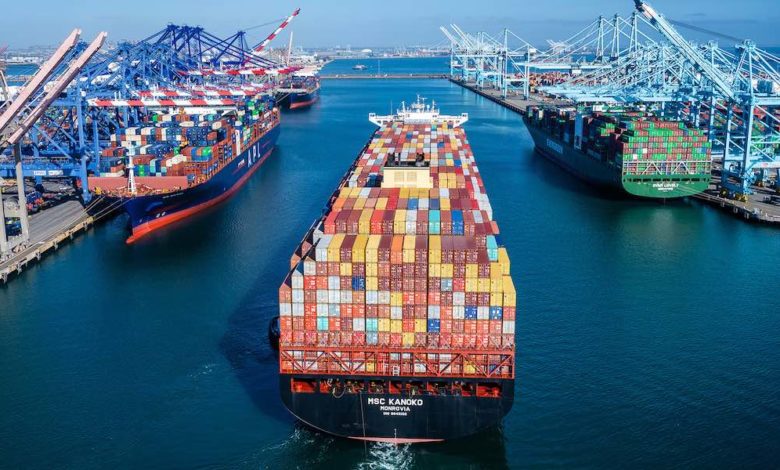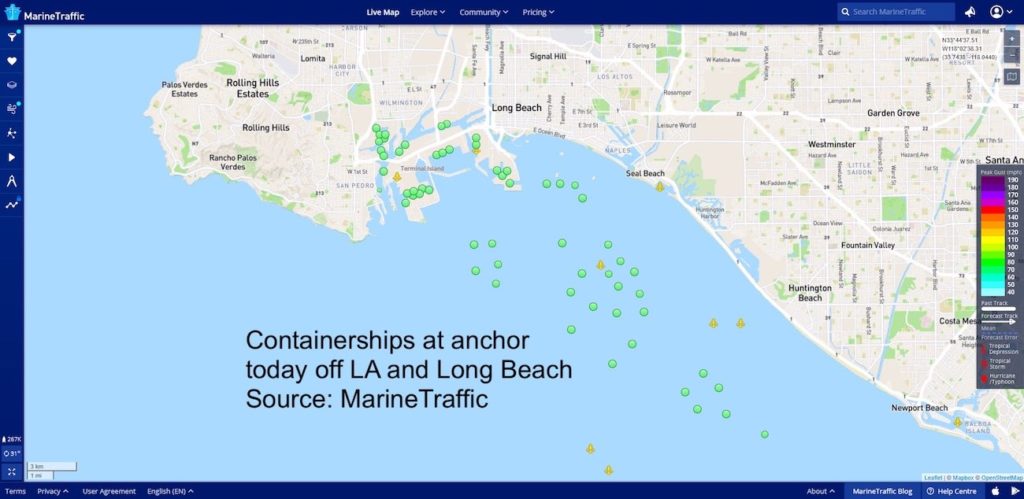Californian ports struggle to clear peak season boxes, brace for brutal September

The largest export out of America’s top container port is air, a stark reminder of the massively pressurised situation slamming US supply chains this peak season.
Giving an update on operations yesterday, Gene Seroka, the executive director of the Port of Los Angeles told reporters: “Our largest export commodity continues to be air as we reposition empty containers back to Asia.”
The volume of containerships at anchor waiting for berth space to open up at the twin ports of Los Angeles and Long Beach has been growing all month. As of this morning, latest data from MarineTraffic shows a total of 30 boxships waiting in San Pedro Bay, a queue stretching south for some 20 km (see map below).
Our largest export commodity continues to be air
Indeed, such is the severe backlog that the Marine Exchange of Southern California has been forced to open drift areas as both the bay’s primary and overflow anchorages are full. The last time this occurred was in January, and the current situation suggests next month could set new historic records for ships at anchor off America’s two main gateways.
The number of container ships at anchor outside the Port of Los Angeles is expected to rise again, with an anticipated 90% of arriving vessels next month “heading straight to the parking lot,” Seroka said yesterday.
90% of arriving vessels have no alternative but to park up
Approximately 75% of ships arriving at the port were sent to anchor in July — a 50% increase compared with June. Early August data shows 90% of arriving vessels have no alternative but to park up. The amount of time they spend once they get there held steady at about five days in July, but Seroka said that too is increasing.
Average container dwell time at terminals is about 5.3 days, warehouses is 8.3 days, and rail is running over 13 days, Seroka detailed.
Seroka said the challenge facing the entire supply chain amounts to “squeezing 10 lanes of freeway traffic into five lanes.” The port boss advised consumers to get their Christmas shopping plans in place far earlier this year or risk having some very disappointed family members come December 25.
The extraordinary pressure felt at many of America’s ports on intermodal routes is making headlines daily in US mainstream media. Earlier in the summer the White House announced the creation of a Supply Chain Disruptions Task Force. Led by the secretaries of commerce, transportation and agriculture, the task force aims to bring together stakeholders “to diagnose problems and surface solutions – large and small, public or private – that could help alleviate bottlenecks and supply constraints”.


Who is paying for the costs involved in running these large ships at anchor all around the world? Could it be the “excessive” freight rates?
Are USWC ports working 24/7?